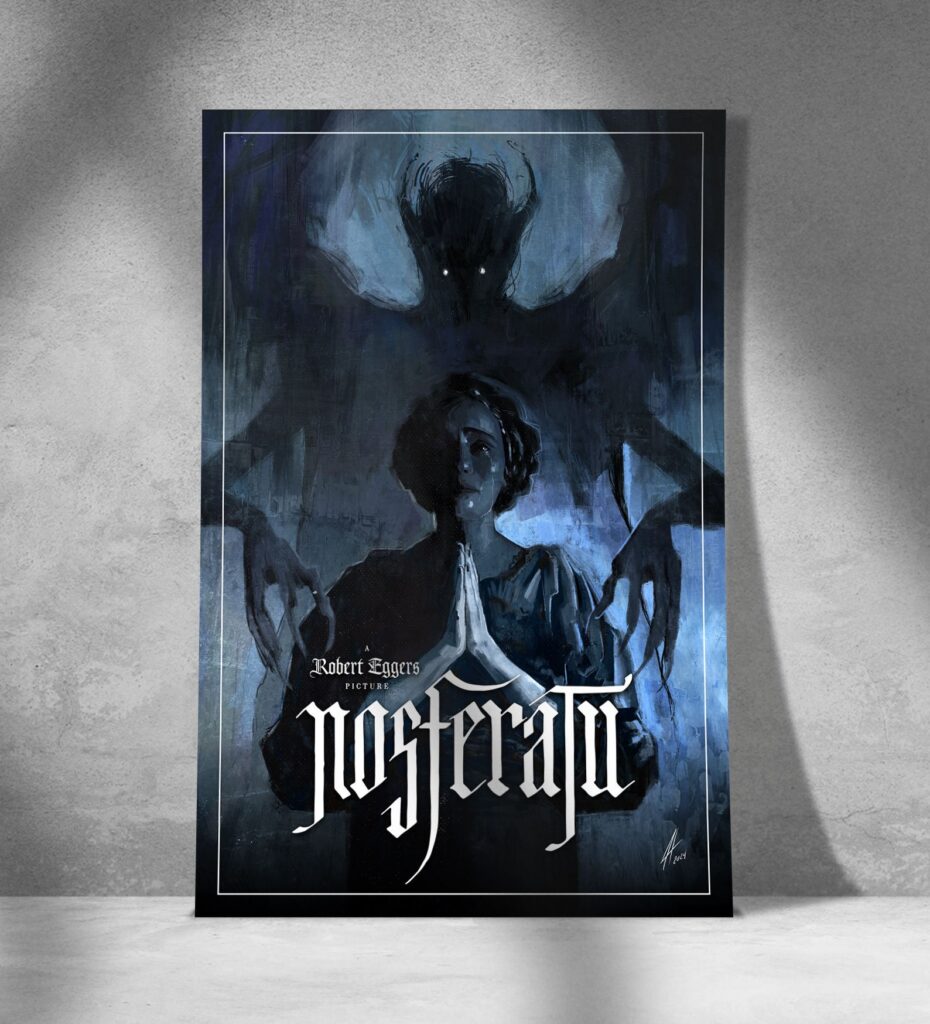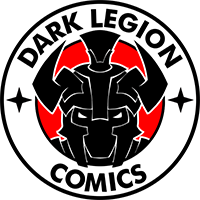The Dark Herald Recommends: Nosferatu (2024)

(Note for the reader, I don’t normally do this but I would strongly recommend reading my essay on the original Nosferatu (1922). Some of what I reference below won’t make sense otherwise. *** Spoiler Alert: This film follows the plot of the original 1922 film. Given that the story is literally a century old I will make no effort to avoid spoilers***)
Gothic horror has at long last returned from the dead.
For years the grand school of cinematic fear was consigned to film history classes because the modern world had moved too far past it. If you wanted something scary then you were going to be watching Jump Scare and gorefest like Terrifyer.. Or if you prefer there was always something worse available like American Horror Story where you could also have creepy sex thrown in as well. Every setting had to be contemporary unless you were making a cliche-riddled melodrama about the horror of racism where white men are the real monsters, then it would be set in the 1950s.
Nosferatu is a throwback to the days of crumbling castles, dark curses, protagonists that are isolated and completely overwhelmed by the supernatural forces they cannot fight. And the setting of course, that has to be in the 19th century. The age of science and reason whose bright dawn turns out to be a false one.
Robert Eggers does not have a track record for turning a major profit but has no trouble getting films made. The reason is that he is one of the few talented directors left in an industry that used to produce them by the score every year. There are still a few old-timers who remember when filmmaking could be an art.
Nosferatu begins in a very Robert Eggers style. Ellen, a girl who is psychic but unbearably lonely opens herself up to what she thinks is an angel but is in truth a demonic power.
We bounce forward a few years and her new husband Thomas has been offered a tremendous opportunity by his legal firm. Head out to the eastern European country of Transylvania and secure the purchase of a property in his hometown of Wisborg by a Count named Orlock (it’s been a while since he’s been called that).
Ellen is frantic to not let him go. She is convinced it will end in horror and she’s right. However, he has debts and little else (a serious problem in the 19th century) while heading into the Wild East carries risk it’s worth it.
After some low-key adventures that set the tone with gypsies and innkeepers he arrives at Orlock. A carriage without a driver thunders up to him and the door opens by itself. The shot slowly zooms in on the empty carriage. Enter freely and of your own will.
Thomas arrives at the castle and meets Orlock. Bill Skarsgard is unrecognizable in the title role. His deep, slow, rasping voice enfolds Thomas in his accursed shadow.
Thomas is trapped and the already fragile Ellen shatters. She begins having nightmares and seizures.
Most of the castle scenes were shot (insanely and brilliantly) by candlelight. It gives shadows a flickering depth and what light there is golden yet cold. The rest of the scenes in the castle are shot with a blue tint, this is clearly being done as a tribute to the original film. We don’t have a clear view of Orlock for about 45 minutes into the film. This movie takes its time filling you with dread.
In all four major versions of Nosferatu (I include Shadow of the Vampire in that list) the film enters its second act when Thomas accidentally cuts his thumb slicing a loath of bread. In every other version, Orlock loses it at the sight of Thomas’ blood, he can not contain the howling, dead void within him demanding to be filled. In this one he controls himself.
Thomas passes out and awakens with rat-like bite marks on his chest. He discovers his imprisonment.
There is a key scene that has a very Eggers touch. The count pays him with a bag of gold and then has him sign a document that is nothing but occult glyphs and sigils. Orlock claims it’s in the local language but you know just looking at it, that Thomas is signing the Devil’s Book.
Thomas starts hunting through the castle for the Count and finds him in his fairly ornate iron casket. Orlock rises and it’s a full frontal nude scene. Sort of. This the clearest view of the vampire we’ve seen up until now. What you could see of him before wasn’t like the classic Orlock, with his thick mustache he looked more like Stoker’s description of Dracula. “(T)all old man, clean-shaven, save for a long white mustache and clad in black from head to foot, without a single speck of color about him anywhere.“ When you get this full monty shot of Count Orlock, he is clearly and obviously a corpse. That was a the point of it.
Robert Eggers always has a certain amount of completely non-erotic nudity. And Nosferatu is no different. Let’s be very clear about this, this is not a sexy Victorian gentleman. This is not a Byronic hero whiling away the centuries for his lost love to be reborn. In the original, Orlock was a wretched creature living in the shadows. This vampire however is purest evil, an anti-paladin who champions plague, death, and pain. It’s not that he lives in shadows but that he absorbs the light around him.
Ellen continues to degenerate. She’s living with Thomas’s lifelong friend Fredrich, his wife Anna (a lifelong devoted friend of Ellen’s), and their two children. They aren’t in the original movie and I knew better than to get attached. These were kind and loving people who were going to be used to put a human face on the horror that Orlock visits on Wisborg.
Orlock arrives in a plague ship loaded with rats that begin spreading pestilence throughout Wisborg. Dr. Alban is summoned and immediately diagnoses Ellen’s problem as being supernatural, not medical. William Dafoe doesn’t just chew the scenery, he gorges himself in a Brobdingnagian gourmand’s gastro-orgy of melodrama. He’s always great to watch but here, he excels himself as the man of science turned occult expert.
Fredrich fulfills the function from the original film, of being a man of the Enlightenment who cannot accept that it is the supernatural that is destroying everything around him that he holds dearest.
Alban and Thomas go on a hunt for Orlock’s crypt. The putrid soil that he was buried in must be sanctified before sunrise when he must return to it or perish.
Ellen on the other hand knows that only she can defeat Orlock by offering herself as human sacrifice. She invites Orlock into her bedroom wearing her wedding gown and keeps him there until morning. The beast is destroyed and she dies in Thomas’ arms as both Wisborg and her own curse are lifted.
The cinematography was a dark glory or flickering candlelight, Hammer Film’s palette of Eastman color and blue filters from the dawn of filmmaking. The score is vast and menacing, it never lets go of you once it has you. Nosferatu is a gothic horror in the grandest tradition.
All that said, I do have some notes.
It is not a perfect film.
You will find little tributes to the original film, Fredrich and Alban being the two most obvious. They were clearly referencing Fredrich Murnau and Alban Grau. Ellen’s cat was named Greta. Greta Shroder was Ellen in the 1922 movie. I guess it’s nice that Eggers put these easter eggs, most folks wouldn’t get the references but if you do it feels like a smarty party for clever film nerds and I hate being lumped in with those asshats. It was distracting and unwelcome.
Bill Skarsgard and Aaron Taylor-Johnson both had the rebound of the century coming off the two worst films 2024 and landing in the best. Nicholas was just fine as Thomas. He carried his considerable load.
But Lilly-Rose Depp…
(sigh) Well, as I said, it wasn’t perfect and I’m afraid she’s the reason why. She clearly tried her best and was willing to do whatever weird and gross stuff Eggers wanted her to but there were moments that you could just see that Eggers had shrugged and decided, I guess this is the best take I’m going to get with her. Depp did her job as well as she could but there were scenes that she just couldn’t carry. This part required an absolute A-list talent actress in her twenties and there is only one of those right now. A number of you who have seen Robert Eggers’ films like The Witch, and The Norseman, are wondering why the completely obvious choice of his vastly preferred and drastically more talented leading lady Anya-Taylor Joy wasn’t in this.
Here’s the heartbreaking part, she was. By all accounts this was a very troubled production and went way over schedule, Anya bent over backwards trying to make her schedule work but in the end, she had other contractual commitments and eventually had to drop out.
There was quite a bit more gorey body horror than I’m used to in a Robert Eggers film. I’ll grant it was his vision and given the subject matter as well as its contemporary audience he may have decided this was unavoidable but I wasn’t expecting that from him.
The sex is about the usual amount for one of his films. Although, there is absolutely nothing erotic about it. This is following the old German literary tradition of sex as the destroyer rather than the life bringer.
This is not a film for the whole family by a long shot, and it’s not for most people come to that.
Nonetheless, it is my film of the year for 2024.
The Dark Herald Recommends with Highest Enthusiasm (6/5)

